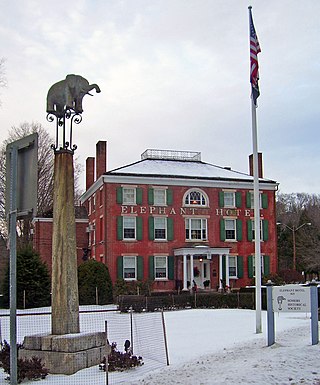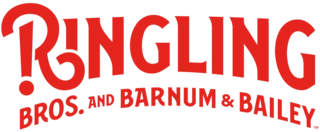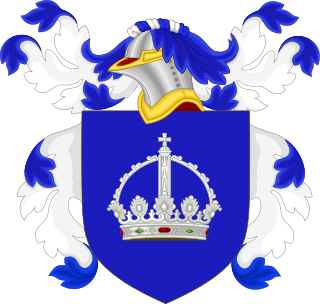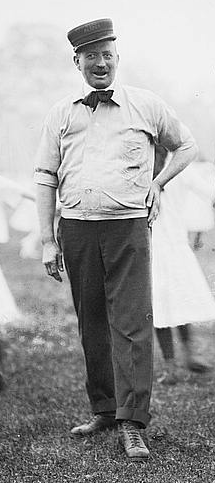
Somers is a town located in northern Westchester County, New York, United States. As of the 2010 census, the town had a population of 20,434. The nearby Metro-North Commuter Railroad provides service to Grand Central Terminal in Manhattan with an average commute time of 65 to 75 minutes from stations at Purdys, Goldens Bridge, Croton Falls, and Katonah.

Bailey's Crossroads is a census-designated place (CDP) in Fairfax County, Virginia, United States. The population was 24,749 at the 2020 census. Bailey's Crossroads lies at the crossroads of State Route 7 and State Route 244.

A circus is a company of performers who put on diverse entertainment shows that may include clowns, acrobats, trained animals, trapeze acts, musicians, dancers, hoopers, tightrope walkers, jugglers, magicians, ventriloquists, and unicyclists as well as other object manipulation and stunt-oriented artists. The term circus also describes the field of performance, training and community which has followed various formats through its 250-year modern history. Although not the inventor of the medium, Newcastle-under-Lyme born Philip Astley is credited as the father of the modern circus.

Phineas Taylor Barnum was an American showman, businessman and politician remembered for promoting celebrated hoaxes and founding the Barnum & Bailey Circus with James Anthony Bailey.

James Anthony Bailey, born James Anthony McGinnis, was an American owner and manager of several 19th-century circuses, including The Barnum and Bailey Greatest Show on Earth.

Hachaliah Lyman Bailey was the founder of one of America's earliest circuses. In 1808, he purchased an Indian elephant which he named "Old Bet" and which was one of the first such animals to reach America. With "Old Bet" as its main attraction, he formed the Bailey Circus, which also included a trained dog, several pigs, a horse and four wagons. This was the impetus for what in time evolved into the Bailey component of what became the Ringling Bros. and Barnum & Bailey Circus.

The Ringling Bros. and Barnum & Bailey Circus is an American traveling circus company billed as The Greatest Show on Earth. It and its predecessor have run shows from 1871, with a hiatus from 2017 to 2023. They operate as Ringling Bros. and Barnum & Bailey. The circus started in 1919 when the Barnum & Bailey's Greatest Show on Earth, a circus created by P. T. Barnum and James Anthony Bailey, was merged with the Ringling Bros. World's Greatest Shows. The Ringling brothers had purchased Barnum & Bailey Ltd. in 1907 following Bailey's death in 1906, but ran the circuses separately until they were merged in 1919.

A menagerie is a collection of captive animals, frequently exotic, kept for display; or the place where such a collection is kept, a precursor to the modern zoo or zoological garden.

Ringling Bros. World's Greatest Shows is a circus founded in Baraboo, Wisconsin, United States in 1884 by five of the seven Ringling brothers: Albert, August, Otto, Alfred T., Charles, John, and Henry. The Ringling brothers were sons of a German immigrant, August Frederick Rüngeling, who changed his name to Ringling once he settled in America. Four brothers were born in McGregor, Iowa: Alf T., Charles, John and Henry. The Ringling family lived in McGregor, Iowa, for twelve years, from 1860 until 1872. The family then lived in Prairie du Chien, Wisconsin, and moved to Baraboo, Wisconsin, in 1875. In 1907 Ringling Bros. acquired the Barnum & Bailey Circus, merging them in 1919 to become Ringling Bros. and Barnum & Bailey Circus, promoted as The Greatest Show on Earth. Ringling Bros. and Barnum & Bailey closed on May 21, 2017, following weakening attendance and high operating costs.

The Crowninshield family is an American family that has been prominent in seafaring, political and military leadership, and the literary world. The founder of the American family emigrated from what is now Germany in the 17th century. The family is one of several known collectively as Boston Brahmins.

Adam John Forepaugh was an American horse trader and circus owner. From 1865 through 1890 his circus operated under various names including Forepaugh's Circus, Forepaugh's Gigantic Circus and Menagerie, The Forepaugh Show, 4-PAW Show, The Adam Forepaugh Circus, and Forepaugh & The Wild West.

The Elephant Hotel is a historic former hotel which today serves as the town hall in Somers, in Westchester County, New York, United States. It was listed on the National Register of Historic Places (NRHP) on August 7, 1974 as Somers Town House and designated a National Historic Landmark in 2005 as Elephant Hotel. It is also a contributing property in the NRHP-listed Somers Hamlet Historic District. It is located at 335 US 202, across from the northern end of NY 100.

John L. Sullivan,, was a tuskless male Asian elephant that performed in the Adam Forepaugh circus and, later, in the Ringling Brothers Barnum and Bailey Circus.

The Somers Hamlet Historic District is a historic district located along US 202 in Somers Hamlet in Westchester County, New York, United States. It is the stretch of highway between the junctions with NY 100 and NY 116, including small portions of both highways. Two side streets, Deans Bridge Road and The Lane, are also included, bringing its total area to 56 acres.

The Gerard Crane House is a private home located on Somerstown Turnpike opposite Old Croton Falls Road in Somers, New York, United States. It is a stone house dating to the mid-19th century, built by an early circus entrepreneur in his later years.

William Snyder was the head keeper at the Central Park Zoo where he instituted a system of animal swaps with other zoos.
The phrase seeing the elephant is an Americanism which refers to gaining experience of the world at a significant cost. It was a popular expression of the mid to late 19th century throughout the United States in the Mexican–American War, the Texan Santa Fe Expedition, the American Civil War, the 1849 Gold Rush, and the Westward Expansion Trails.
A travelling menagerie was a touring group of showmen and animal handlers who visited towns and cities with common and exotic animals. The term "menagerie", first used in seventeenth century France, was primarily used to refer to aristocratic or royal animal collections. Most visitors to travelling menageries would never have the opportunity to see such animals under other circumstances and their arrival in a town would catalyse great excitement. The shows were both entertaining and educational; in 1872 The Scotsman described George Wombwell's travelling menagerie as "[having] done more to familiarise the minds of the masses of our people with the denizens of the forest than all the books of natural history ever printed during its wandering existence."

John H. Robinson created the John Robinson Circus, whose winter quarters were in Terrace Park, Ohio.
















